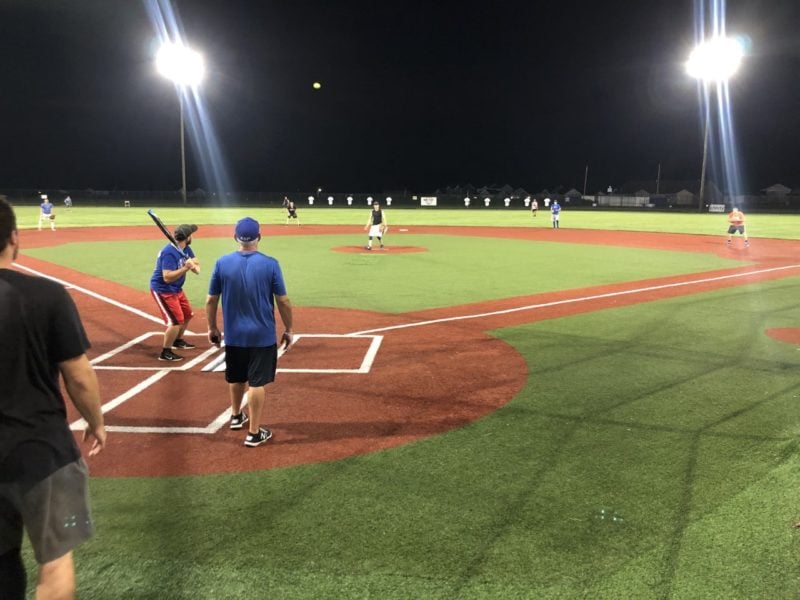1500 Watt Metal Halide LED Replacement
What Does it Take to Replace 1500 Watt and 2000 Watt Metal Halide with LED?
Metal halide fixtures dominated commercial lighting for decades before LED technology revolutionized the industry. While they delivered bright illumination at reasonable upfront costs, their inefficiency and maintenance demands made them costly to operate. Based on our 17 years serving commercial customers, these high-wattage metal halides appear most frequently in demanding applications:
- High Bay Lights
- NSF Food Processing Lights
- Shop Lights
- Flood Lights
- Parking lot lights
- Wall pack lights
- Stadium lights
- LED Sports Lighting
Converting 1500-watt and 2000-watt metal halides shares similarities, but each presents unique considerations. Many customers approach LED selection using outdated metal halide thinking—choosing fixtures by wattage rather than light output. This approach leads to poor results because LED efficiency makes wattage comparisons meaningless.
Modern LED fixtures deliver superior light quality, last significantly longer, and consume 60-75% less energy than comparable metal halides. We’ve handled thousands of these conversions over the years, and the cost savings typically justify replacement within 18-24 months through reduced energy bills alone.

Critical Differences Between Metal Halide and LED Performance
Metal halide selection relies on wattage because their efficiency remains relatively consistent across manufacturers. LED fixtures vary dramatically in efficiency, making lumens the only meaningful comparison metric. A 500-watt LED can easily outperform a 1500-watt metal halide while using three times less electricity.
Beyond energy consumption, LED fixtures deliver measurably better light quality. Most LED fixtures achieve 80+ CRI compared to metal halide’s typical 65-70 CRI rating. Higher color rendering means you need fewer lumens to achieve the same visual performance—quality trumps quantity every time.

Metal halide lamps scatter light in all directions, requiring reflectors that absorb or misdirect 20-40% of the generated lumens. LED fixtures focus light precisely where needed using built-in optics and selectable beam angles. We typically recommend 60-degree beams for general high bay applications and 25-degree beams for heights above 30 feet.
Lumen maintenance creates another significant advantage for LED technology. Metal halides lose substantial brightness over their lifetime while maintaining the same energy draw—you pay the same electric bill for diminishing light output. Quality LED fixtures maintain 90%+ lumen output after 50,000 hours of operation.
Understanding scotopic versus photopic lumens explains why LED fixtures appear brighter than metal halides with identical lumen ratings:
- Photopic lumens – Light energy invisible to human eyes, detected by meters but not contributing to usable illumination
- Scotopic lumens – Visible light energy that your eyes actually perceive and use for visual tasks
LED fixtures generate almost exclusively scotopic lumens, while metal halides waste significant energy producing photopic lumens that don’t improve visibility.

High-Wattage Metal Halide Replacement Applications
Converting 1500-watt and 2000-watt metal halides involves some of the most demanding lighting applications we encounter. These powerful fixtures illuminate expansive areas where light quality and reliability directly impact safety and performance:
- Baseball Fields
- Soccer Fields
- Football Fields
- Sports Fields
- Race Tracks
- Factories and Manufacturing
- Airplane Hangars
Success in these environments depends on several interconnected factors. Mounting height affects beam angle selection. Ambient conditions influence fixture construction requirements. Usage patterns determine dimming and control needs. We evaluate each project individually because cookie-cutter solutions fail in demanding applications.
Lumen Requirements for High-Performance LED Conversions
Determining proper light levels requires understanding your specific application rather than simply matching metal halide wattage. Based on thousands of successful conversions, we recommend these lumen ranges:
- Indoor Applications: Target 65,000 to 120,000 lumens, depending on mounting height and visual task requirements
- Outdoor Applications: Plan for 65,000 to 100,000+ lumens based on area coverage and ambient light conditions
While wattage shouldn’t drive LED selection, these general equivalencies help establish realistic expectations:
- 1500-watt metal halide performance typically requires 500-750 watt LED delivering 60,000-75,000 effective lumens
- 2000-watt metal halide performance typically requires 800-1000 watt LED delivering 100,000-200,000 effective lumens
Professional lighting design becomes essential at these power levels. Our lighting plans provide detailed photometric analysis showing light distribution, uniformity ratios, and recommended fixture placement. This eliminates guesswork and ensures your investment delivers the expected performance.
Voltage Compatibility and Installation Considerations
Most high-wattage LED fixtures include universal drivers that automatically adjust to your building’s electrical supply. Common voltage inputs include 120-277V, 347-480V, and 100-347V configurations. The driver detects your building’s voltage and operates accordingly—no rewiring required in most cases.
For installations above 25 feet, we typically recommend fixtures with narrow beam angles and higher lumen output to maintain ground-level illumination. Ceiling heights below 20 feet work well with wide beam angles and moderate wattages to prevent hot spots and glare.
Expert Support That Ensures Project Success
High-wattage metal halide conversions represent significant investments that demand precise execution. Our experienced lighting specialists have guided thousands of commercial customers through complex LED conversions over the past 17 years. We provide complimentary custom lighting plans that include detailed photometric analysis specific to your facility’s dimensions and requirements. These professional layouts eliminate costly mistakes by showing exact fixture placement, light distribution patterns, and uniformity calculations before you purchase. Our team also calculates precise energy savings projections based on your current utility rates and usage patterns. This data helps justify your investment and establish realistic payback timelines for budgeting purposes.
